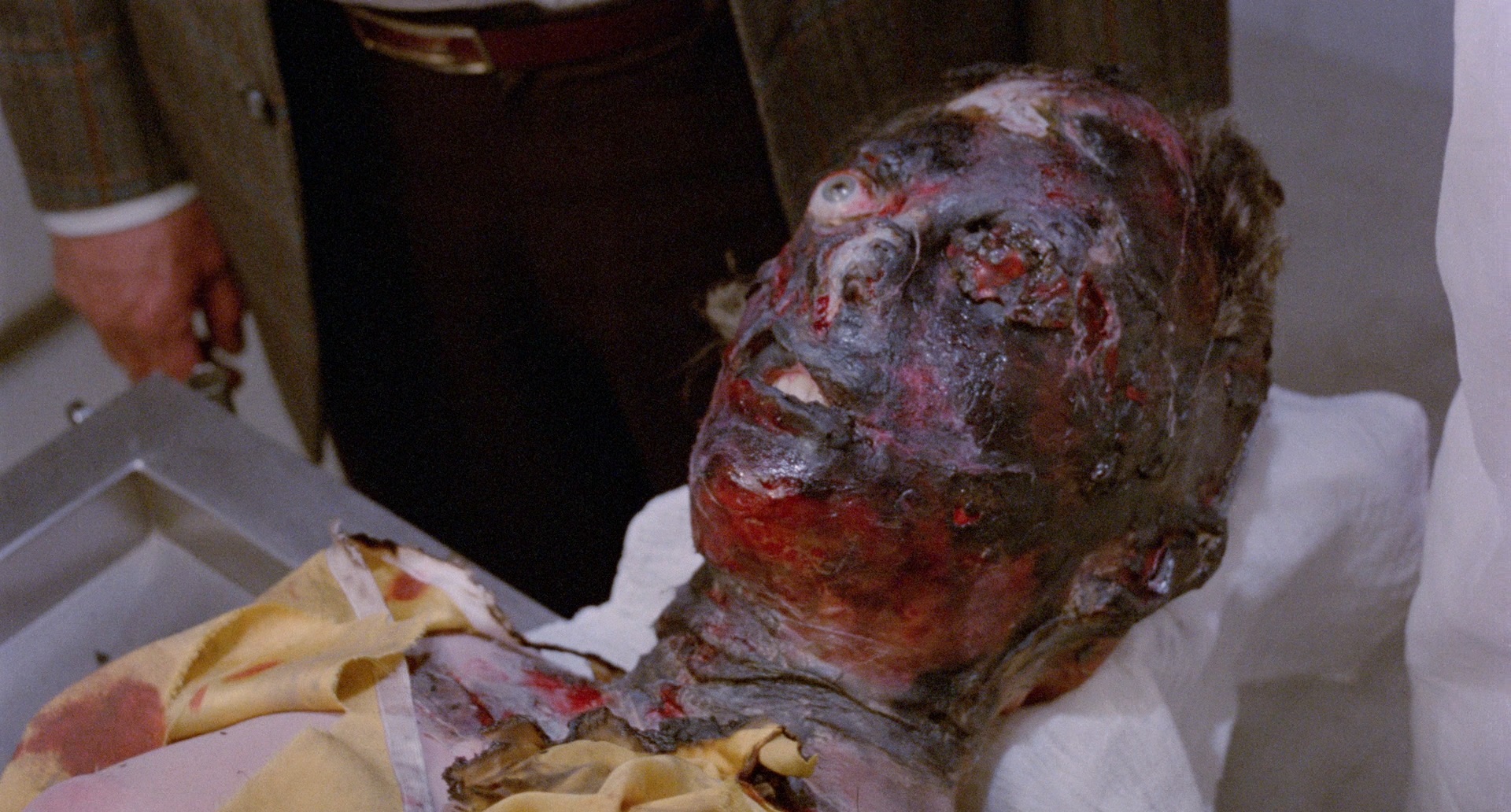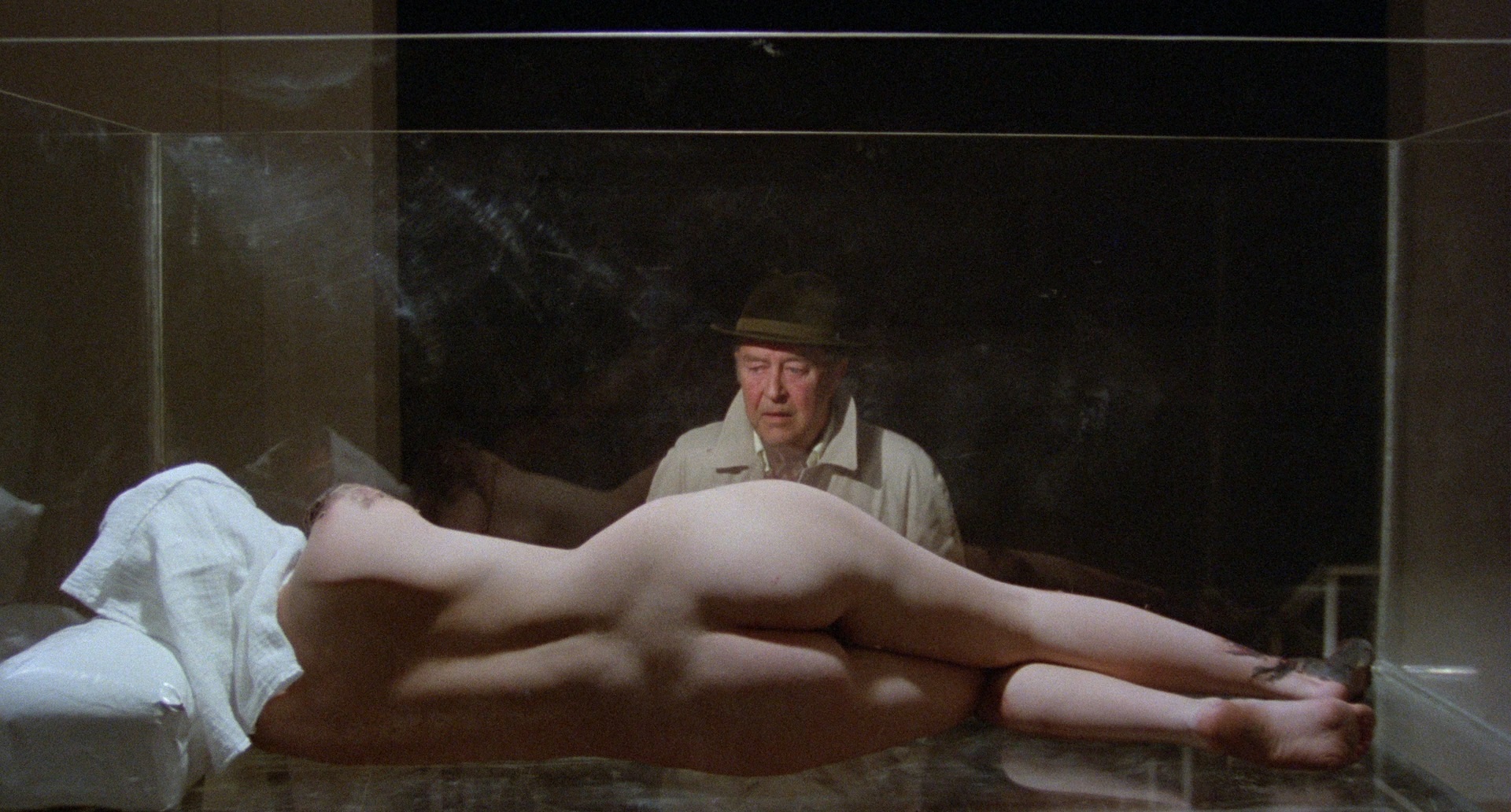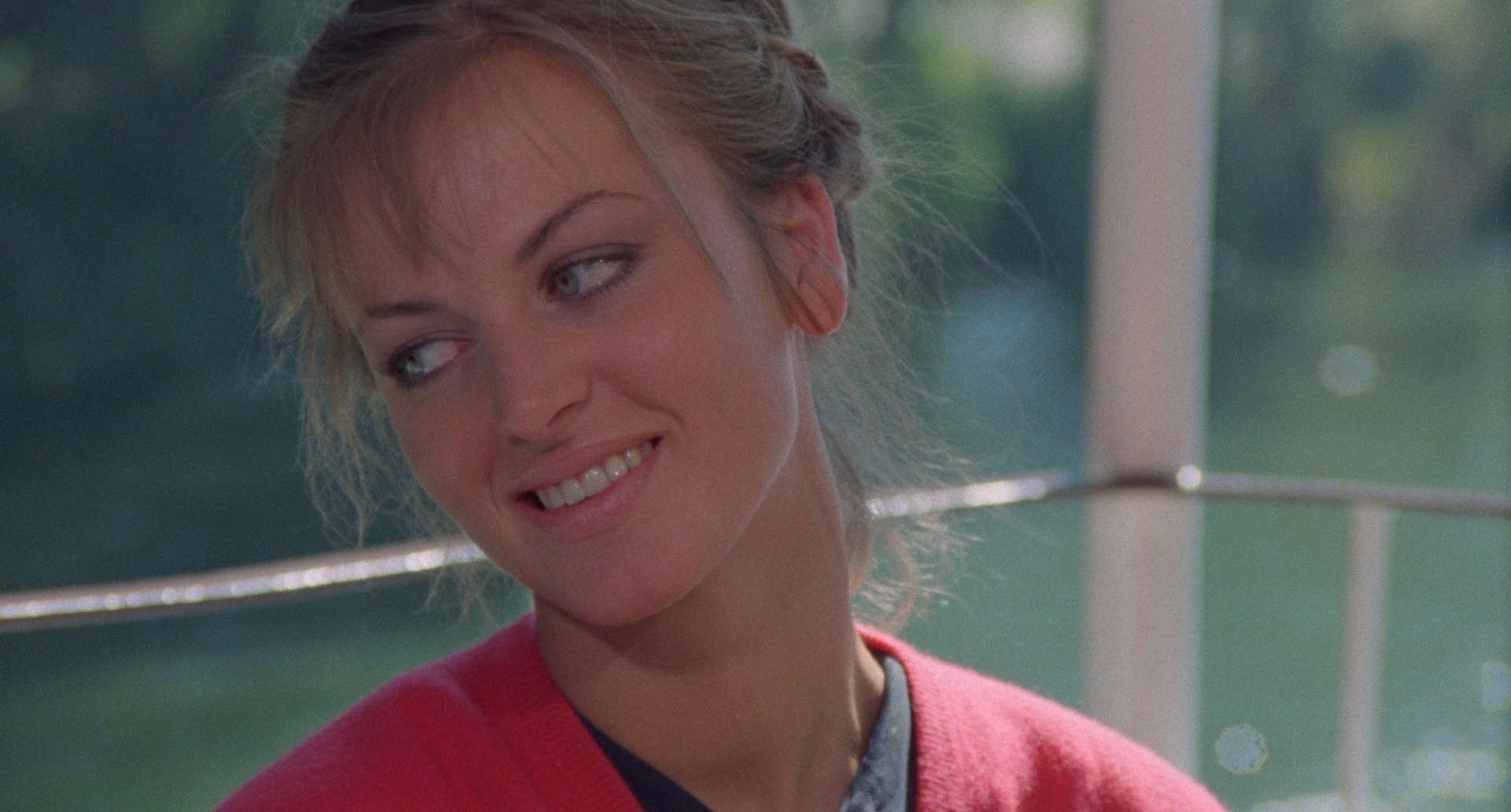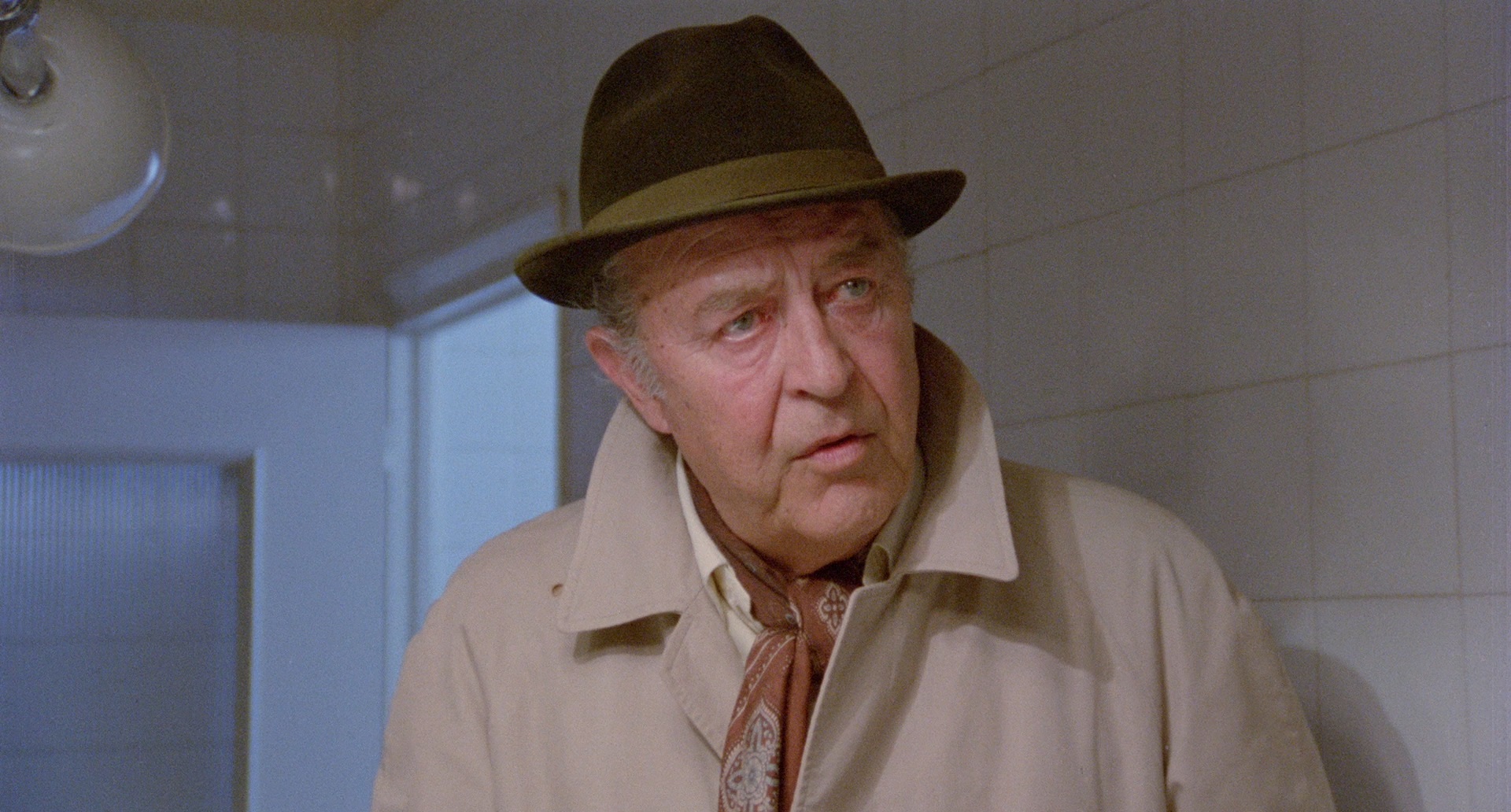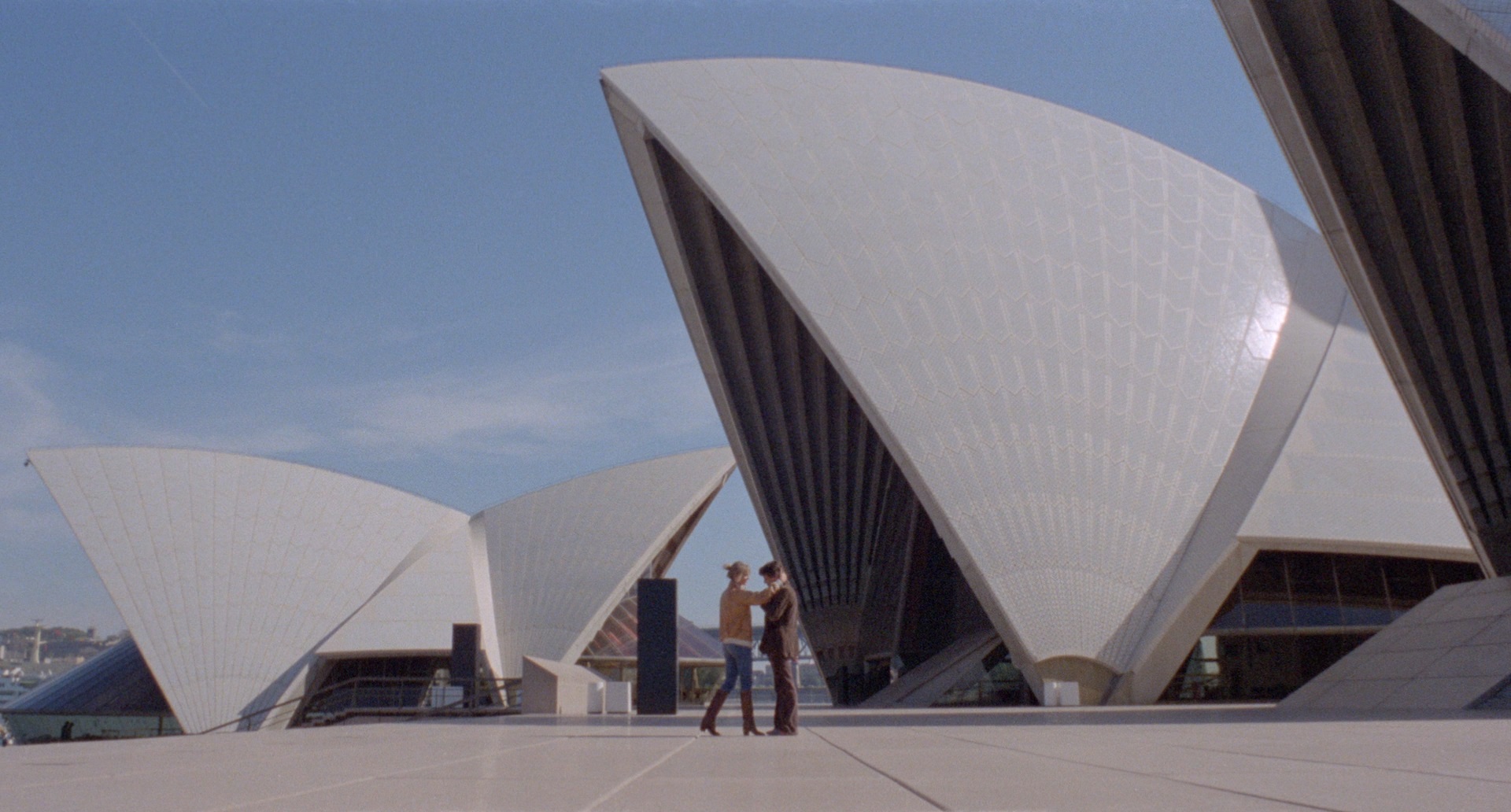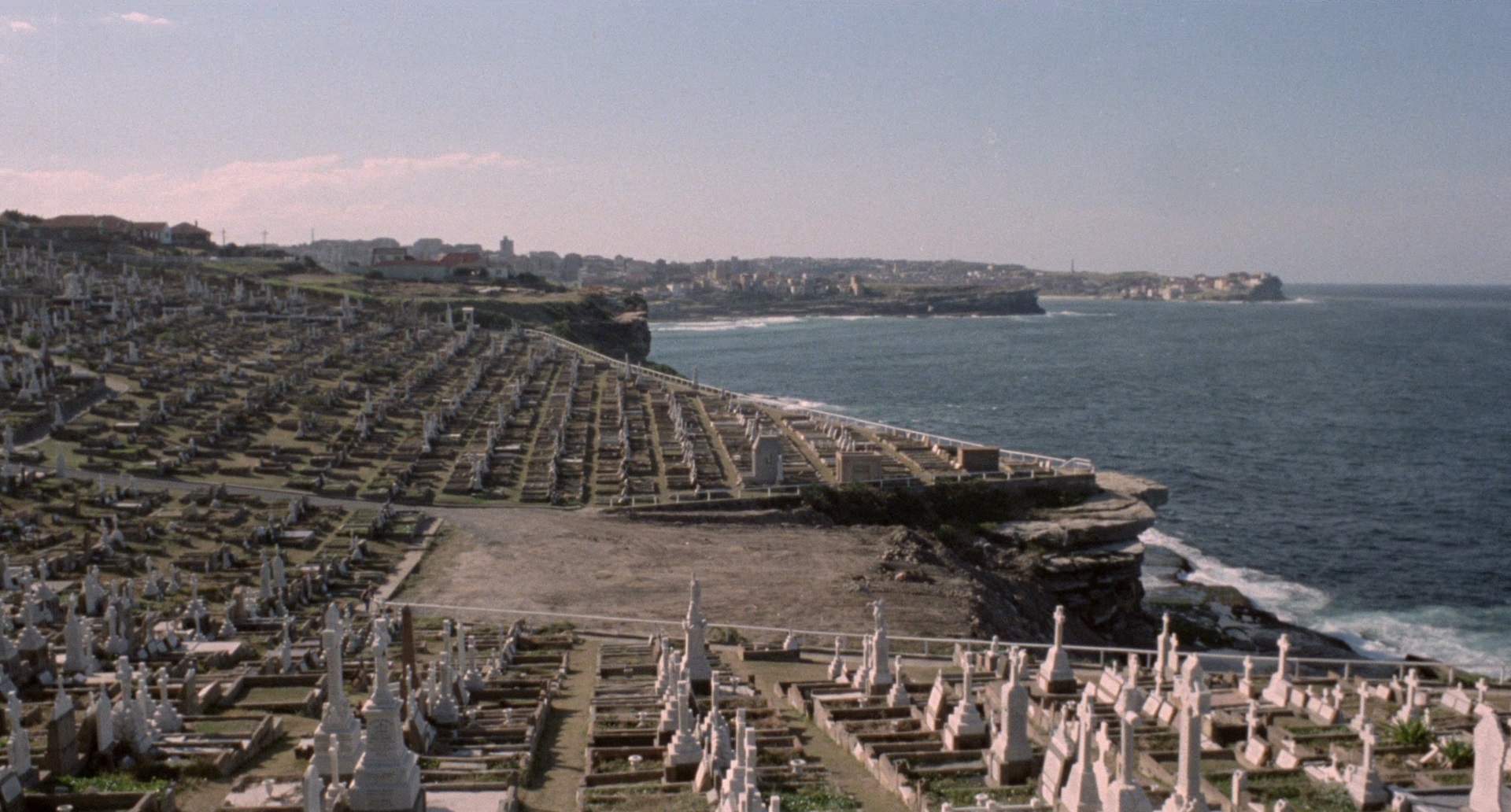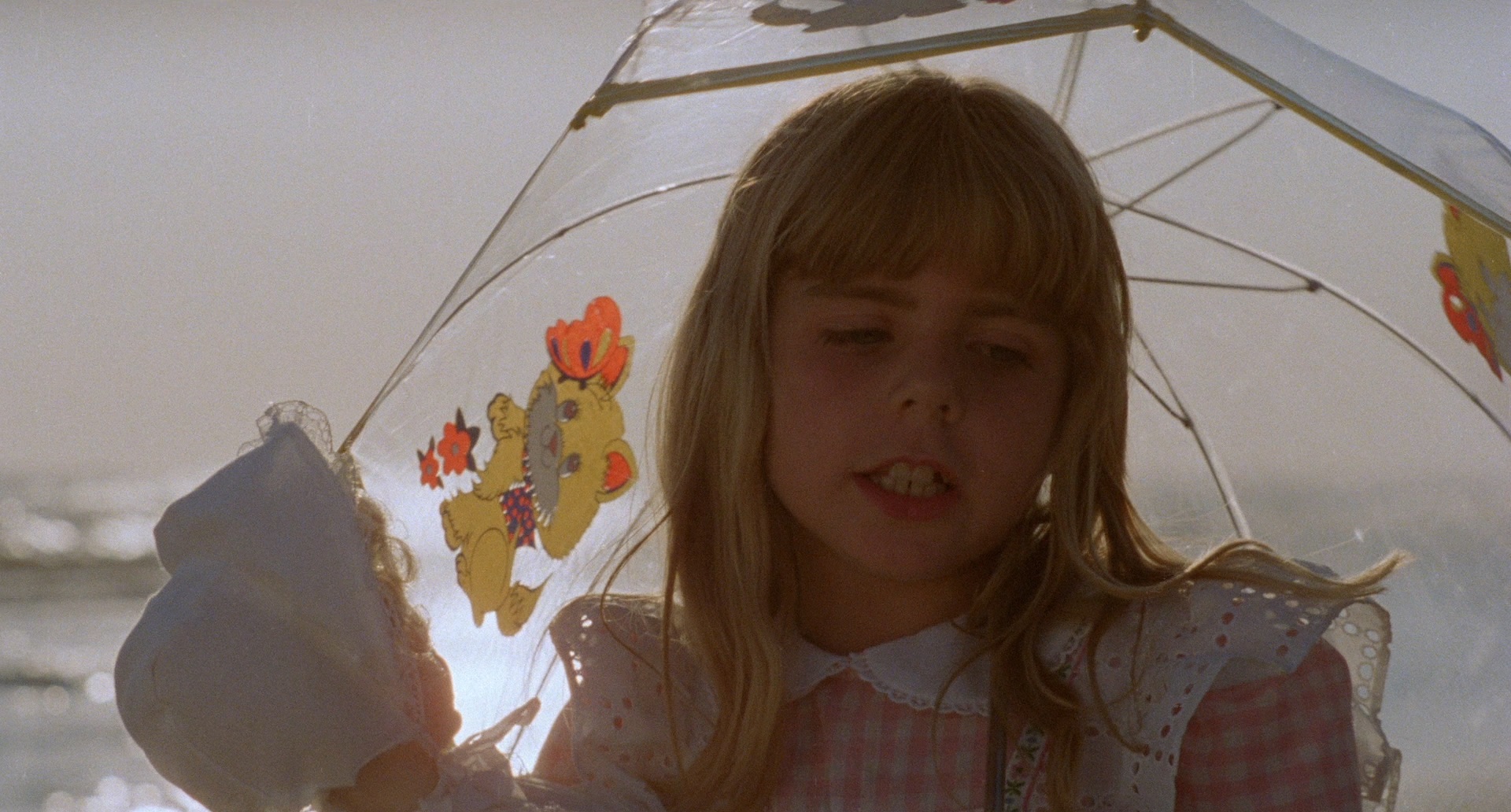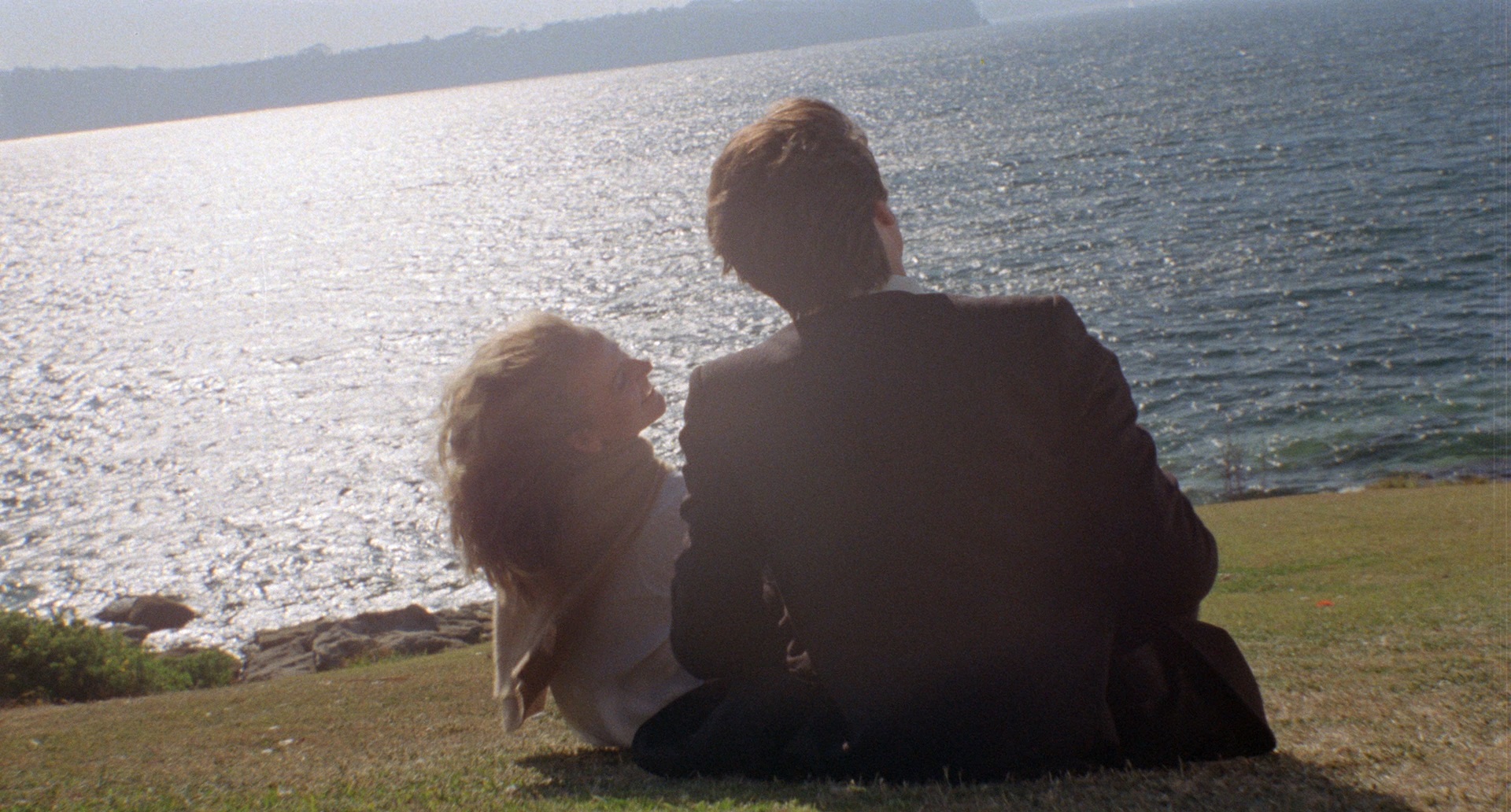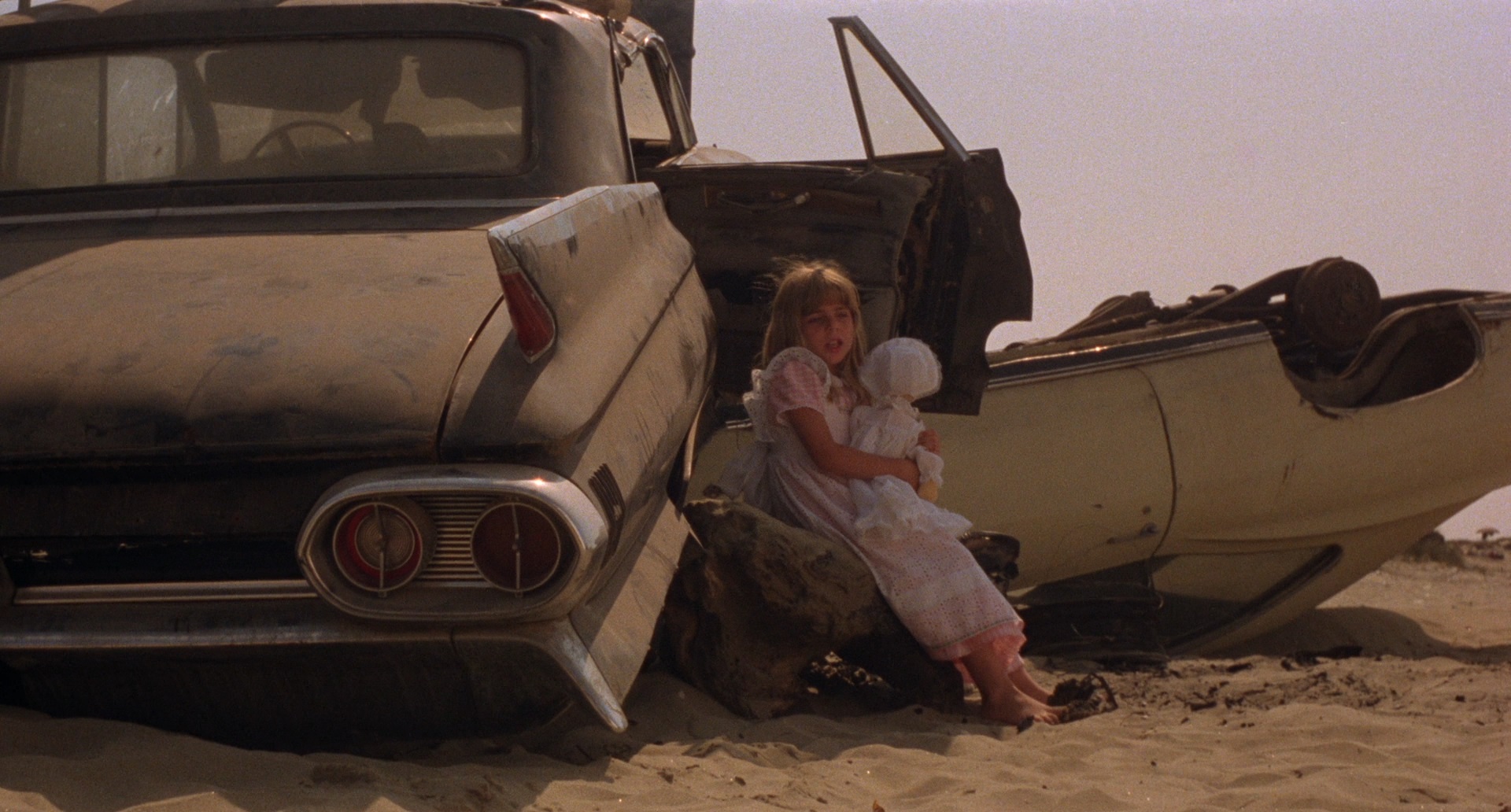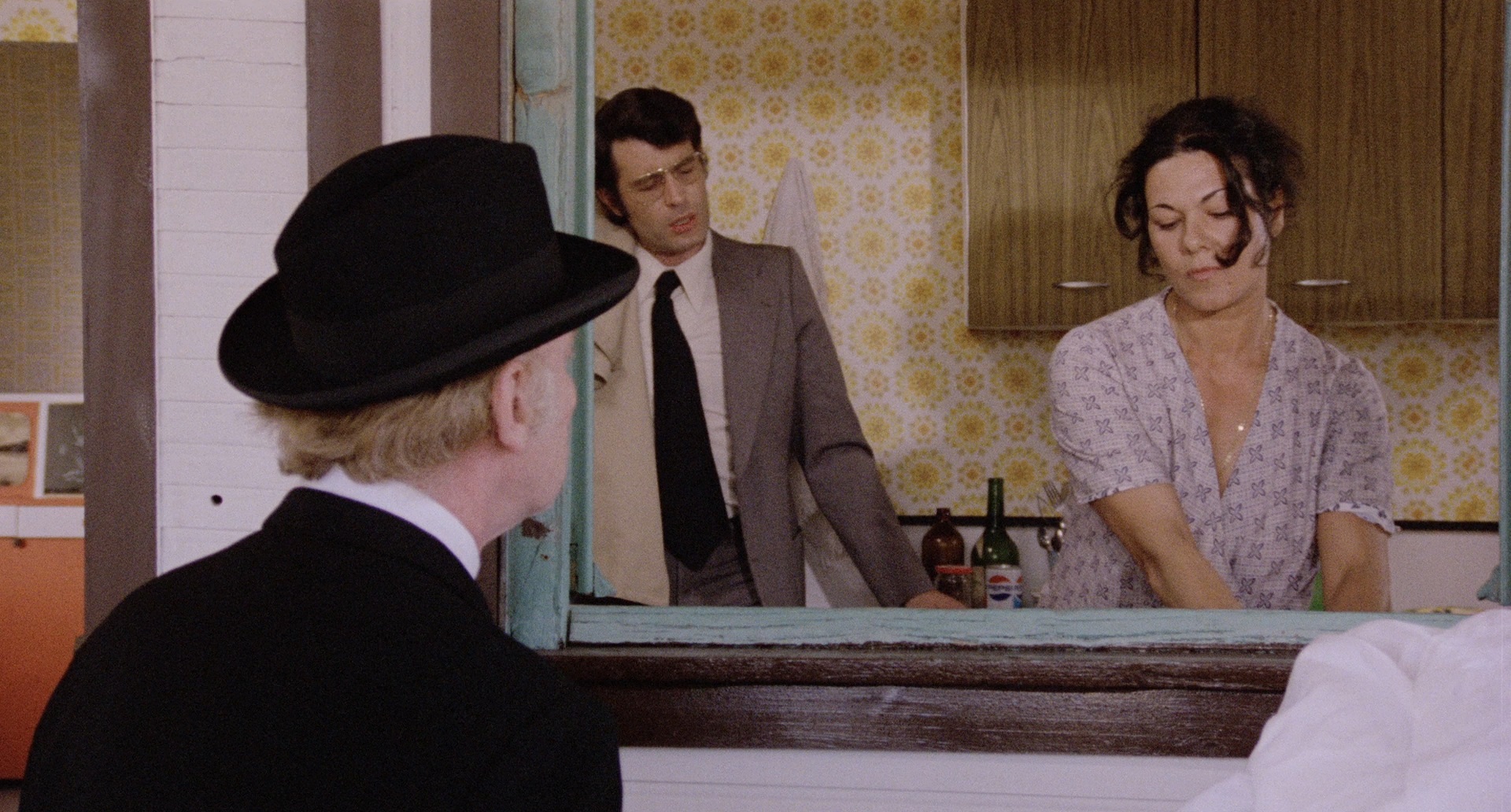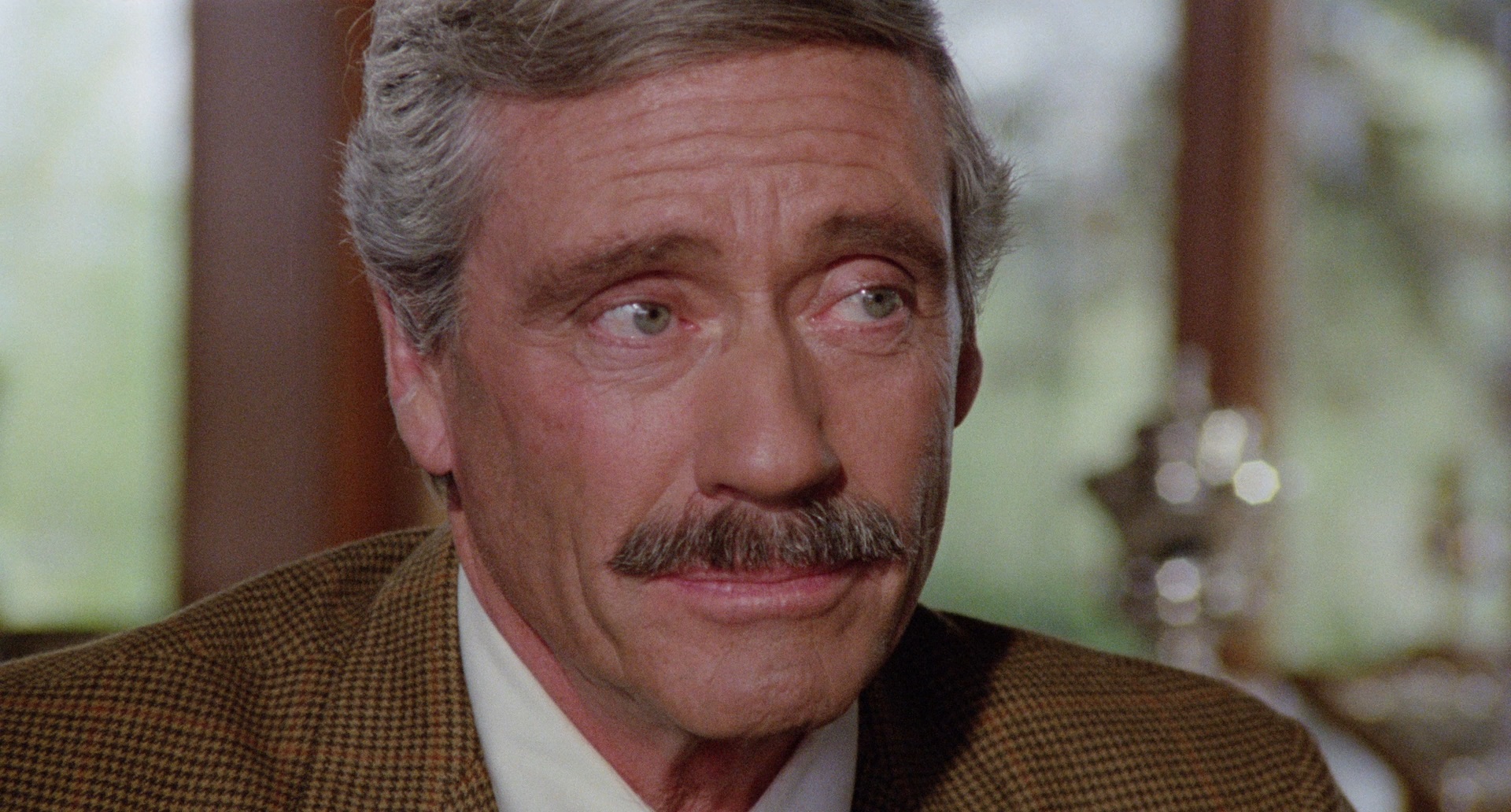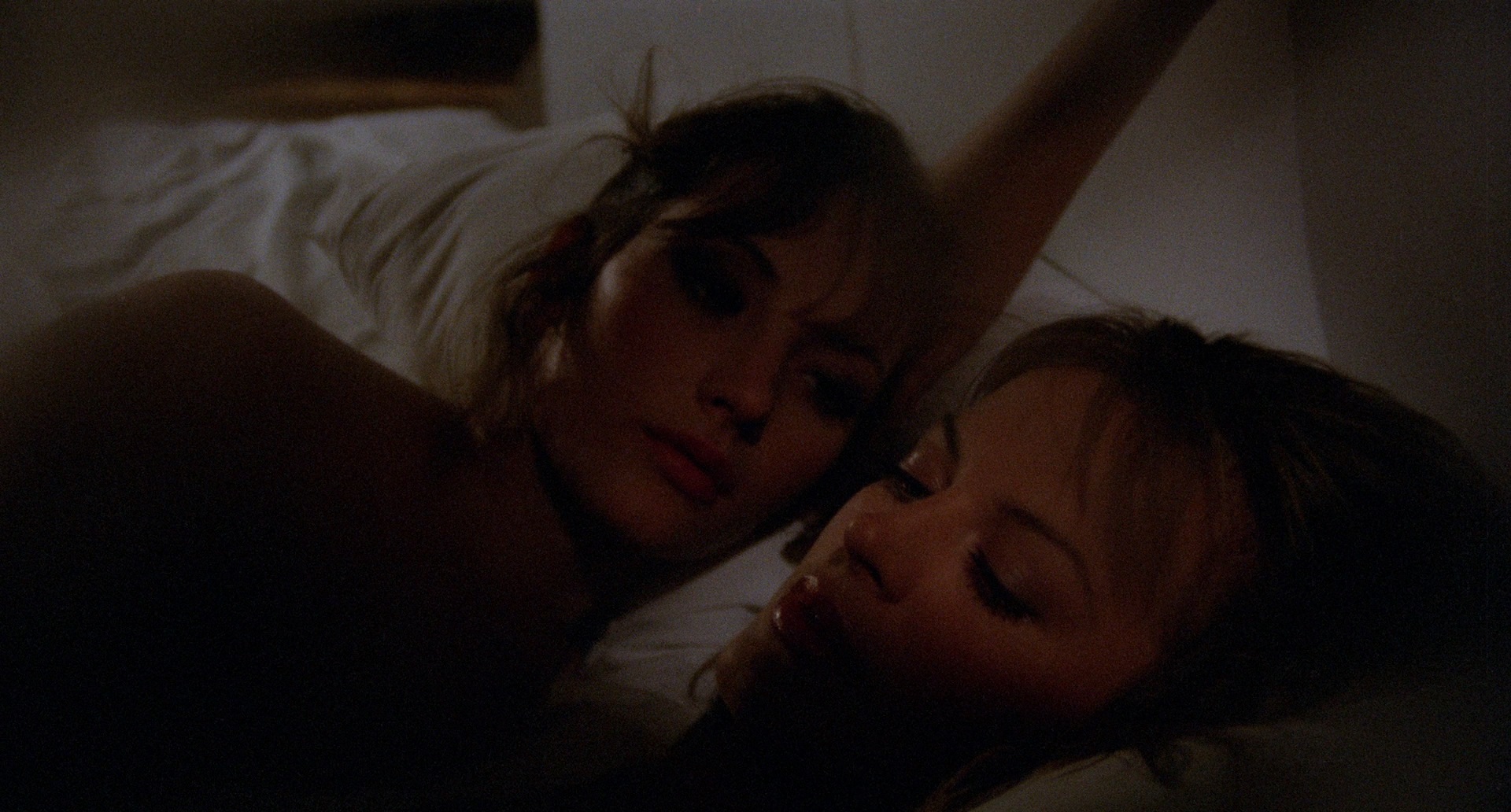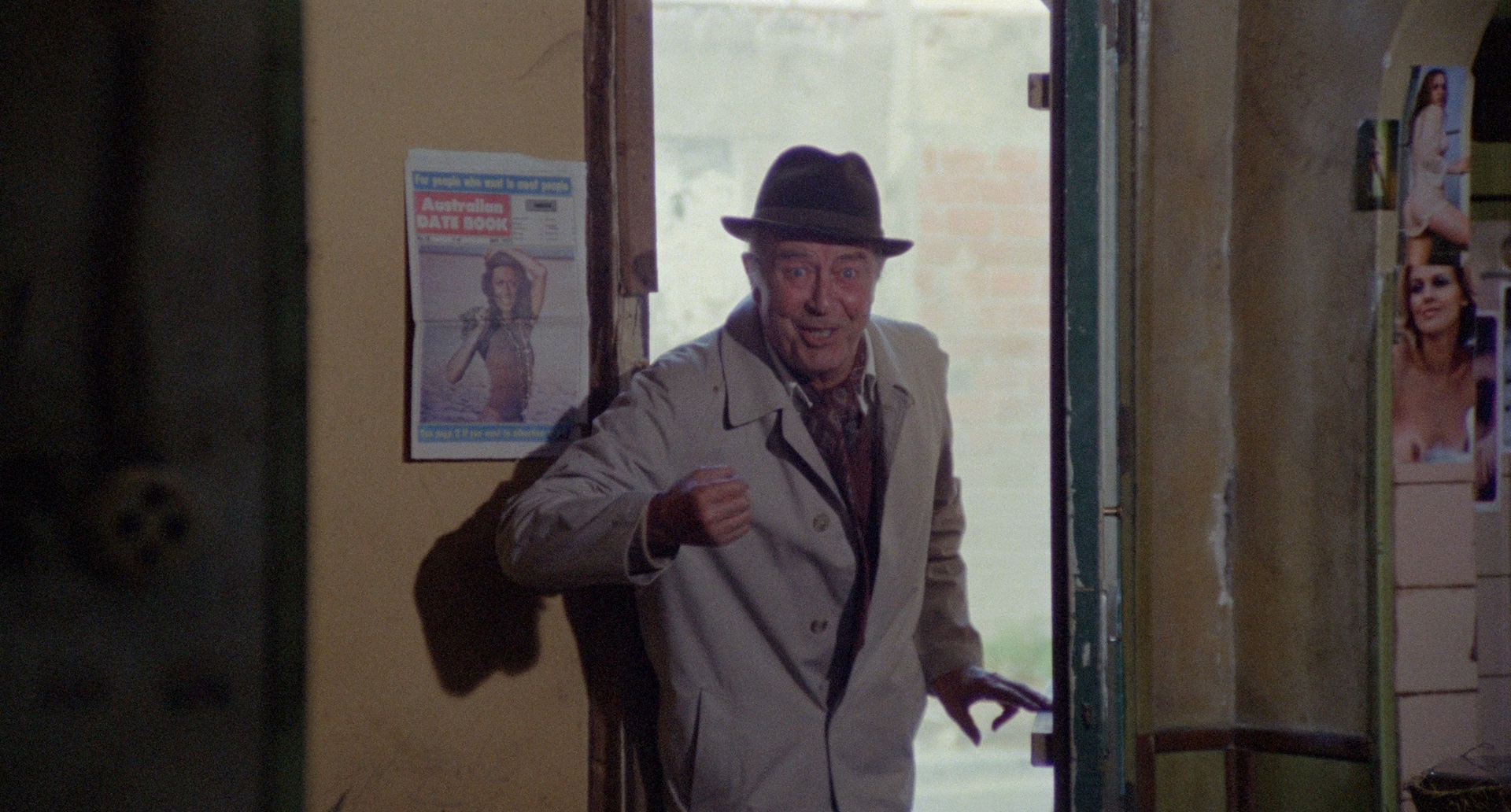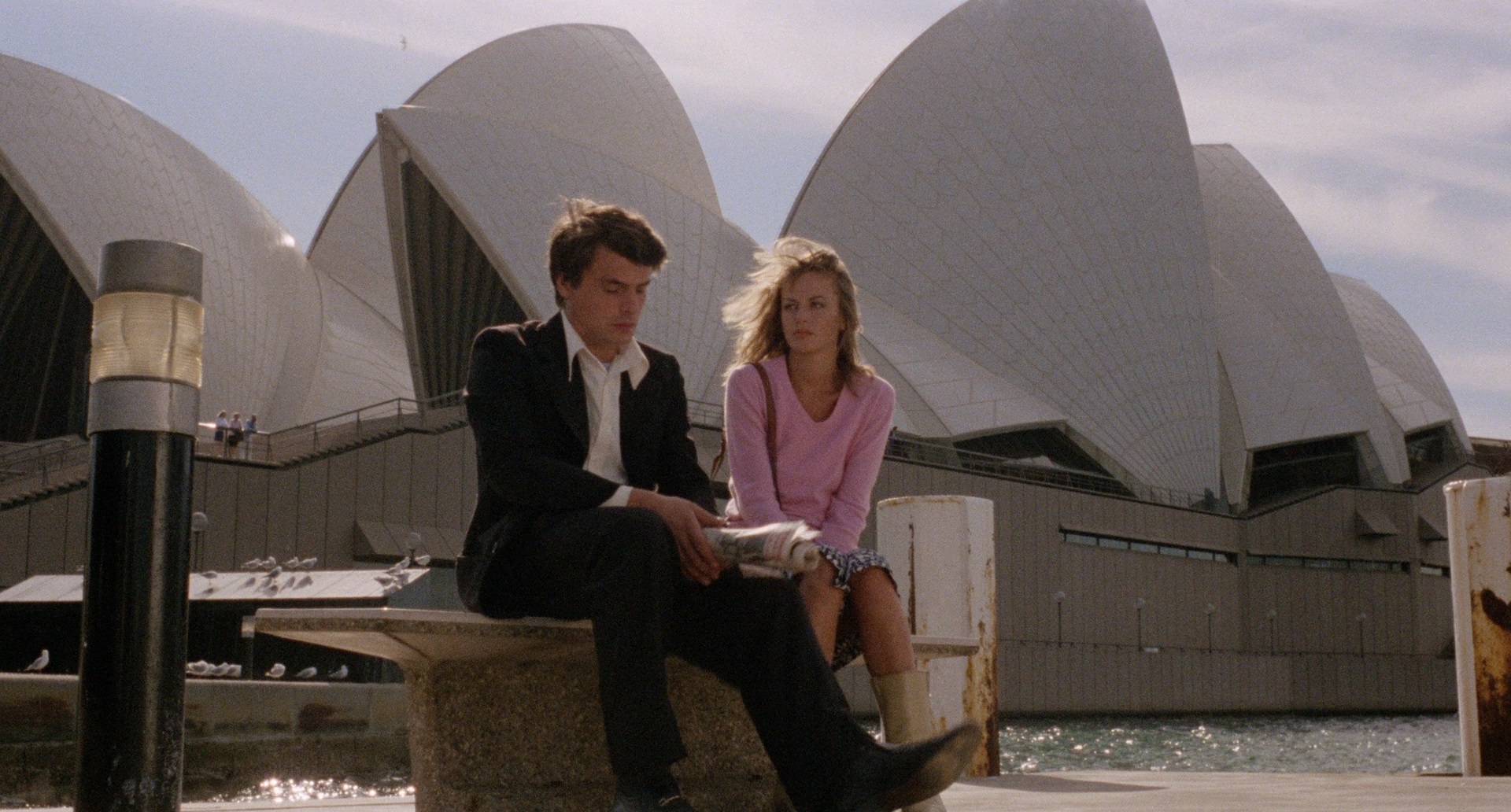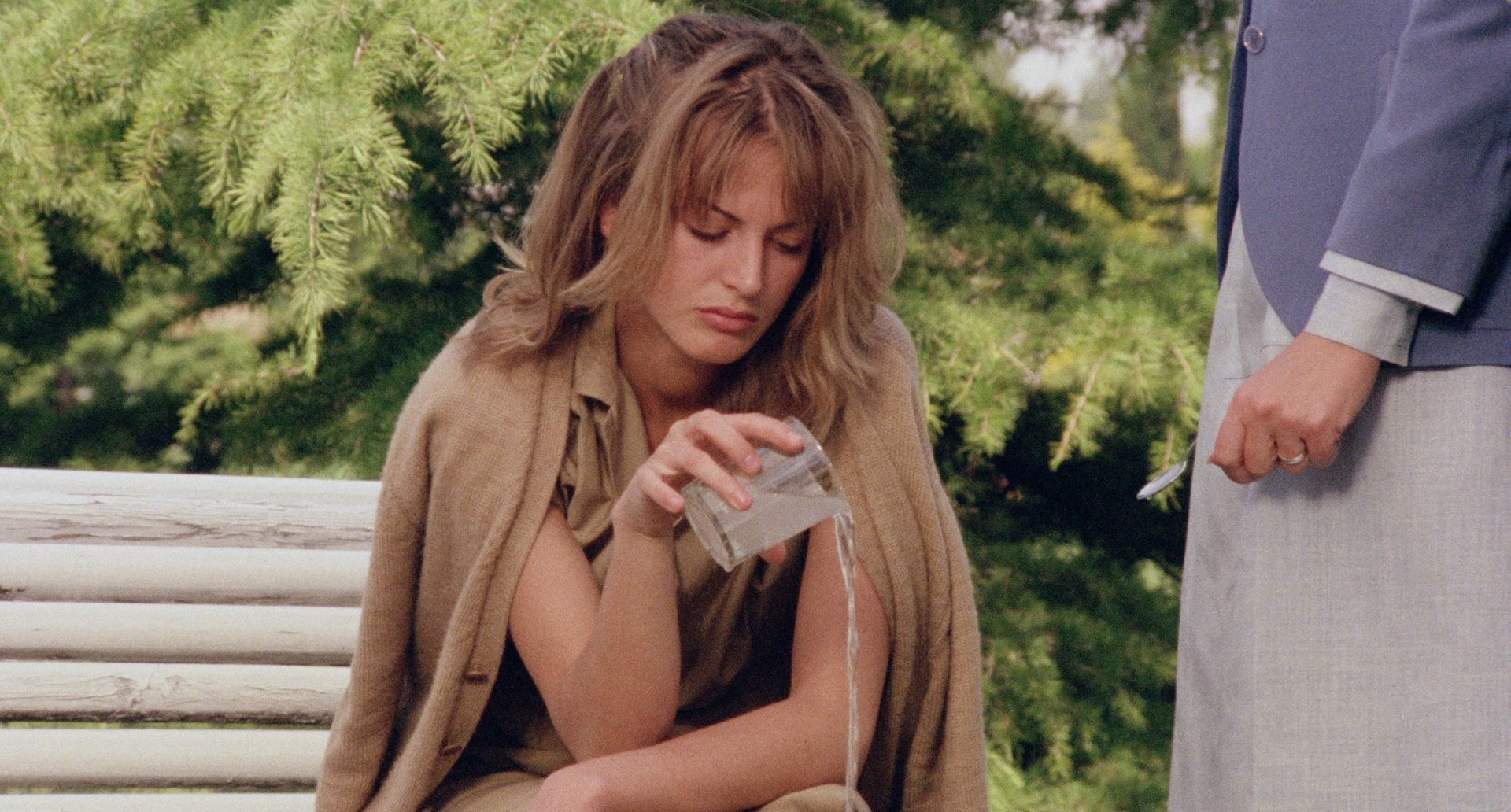| Reviews & Columns |
|
Reviews DVD TV on DVD Blu-ray 4K UHD International DVDs In Theaters Reviews by Studio Video Games Features Collector Series DVDs Easter Egg Database Interviews DVD Talk Radio Feature Articles Columns Anime Talk DVD Savant Horror DVDs The M.O.D. Squad Art House HD Talk Silent DVD
|
DVD Talk Forum |
|
|
| Resources |
|
DVD Price Search Customer Service #'s RCE Info Links |
|
Columns
|
|
|
Pyjama Girl Case, The
Arrow Video // Unrated // September 18, 2018
List Price: $39.95 [Buy now and save at Amazon]
For those who marvel at the poetic and evocative titles so typical of gialli, something as succint and straightforward as "The Pyjama Girl Case" may catch some off-guard. Then again, The Pyjama Girl Case is no ordinary giallo. There are neither black leather gloves nor a straight razor to be found. The killer does not stalk his prey or stage the expected sorts of artfully grotesque attacks. Its body count is among the genre's lowest. Set entirely in Australia – the only giallo that can make that claim – The Pyjama Girl Case transplants an all-too-real murder investigation into what was then the present day. It's as much the story of immigrants perpetually treated as outsiders...as something less...as it is the search for a brutal murderer.
An idyllic day on the beach is cut short by the discovery of a young woman's remains. Bludgeoned, shot, and set aflame, her corpse is far past recognition. Her killer must be brought to justice, but that's all but impossible until the victim herself can be identified beyond the yellow pajamas she wore. The Australian authorities feel they have this well in hand, availing themselves of the latest forensic technologies and investigatory techniques. When retired Inspector Timpson (Ray Milland; Dial M for Murder) gets wind of the murder, he follows what few breadcrumbs remain as only he knows how, no matter how the young upstarts who've taken his place sneer at such outmoded methods. The closer he gets to unveiling the killer, the closer Timpson comes to winding up a victim himself...
Meanwhile, Dutch immigrant Glenda (Phenomena's Dalila Di Lazzaro) has already spoken to the police about her friend Evelyn, an amorous young woman who's been known to wear the same generic pair of yellow pajamas discovered at the crime scene. She once rebuffed Evelyn's nude embrace, perhaps because Glenda simply didn't have time for a fourth. She's already entangled in a slew of affairs, among them an aging, impossibly wealthy doctor (Mel Ferrer), a blue-eyed slab of muscle (Howard Ross), and her dour, working class husband (Michele Placido). Though Glenda could scarcely conceive of such horrors, it's apparent to us as viewers that Evelyn is the titular pyjama girl. Is one of her lovers secretly the murderer? Will Glenda's infidelities soon ensure that her ravaged corpse too will be put on display in the remote hopes that someone can identify her?
By the time of The Pyjama Girl Case's release in 1977, the giallo had largely run its course. The twilight of that genre freed filmmakers from the shackles of well-trodden tropes and conventions, empowering writer/director Flavio Mogherini to craft something far more unique. I'd scarcely even consider this a thriller. It's not as if some masked killer is slashing at Timpson as he traces the origins of drycleaning tags and grains of rice. Glenda doesn't spend the bulk of the film frantically escaping a psychopath's bloody machinations. Murder is integral to The Pyjama Girl Case but is hardly a singular obsession. The investigation, be it official or grudgingly tolerated, feels very much grounded in reality. Even as impossibly ghoulish as the public display of a naked corpse in a glass case would seem, that too is based in fact. It's equally intriguing that The Pyjama Girl Case doesn't reduce the other story it's telling to a binary good and evil. Unfaithful though Glenda is, she's not portrayed as some calculating, exploitative temptress. She seeks what comfort and glimmers of happiness she can. There are aspects of these three men that Glenda cannot resist, but there isn't one among them who can wholly fulfill her. It's unclear if true happiness could ever even be in the cards for her.
Gialli are so insistent on catching the audience off-guard that their twists often defy logic. After all, if a shock reveal doesn't make sense, than viewers certainly can't see it coming. The Pyjama Girl Case is more skillfully crafted than that. Yes, it still boasts its fair share of startling shocks, to the point that steering clear of spoilers prevents me from writing the more thorough analysis I wish I could. These revelations are wholly earned, though. Rather than diminish the film, they leave me eager to watch it again with full knowledge of what's to come.
A recurring theme is the isolation of and disregard for immigrants in modern society. These outsiders are a fixture in Timpson's investigation, often in decidedly unglamorous backdrops – far removed from the glitz and glamour that jet-setting gialli so often celebrated. That extends to Milland's character himself, who, at least in the English dub, is dismissed by his "colleagues" as a Canadian who really ought to scurry back where he came from. (I don't recall Timpson's nationality being referenced in the Italian track – apologies if I overlooked something obvious there – but regardless, he's detached and dismissed just the same.) This is the defining element of Glenda's story and one that very much resonates these many decades later. Glenda, her husband, and his best friend all hail from different countries of origin, and Australia will forever view them as something else. They have their station in life and cannot expect more. They will never be accepted. They will never be treated equally. Anything more is a delusion. Its impact is explored to haunting, devastating degrees – affecting me far more deeply than the sight of another slit throat ever could. The characters of The Pyjama Girl Case are complex and developed, and the film accordingly places a greater emphasis on the relationships between them and the emotions that shape their actions.
The performances and storytelling of The Pyjama Girl Case are exceptional, and its strengths extend further still. The film greatly benefits from both the seasoned eye of cinematographer Carlo Carlini and the extensive location photography in and around Sydney. The imagery is so often breathtaking:
Less successful are the electronic score by Riz Ortolani – disco synths that rarely gel with the melancholy tone and atmosphere being conveyed on-screen – and the two dreadful numbers by chanteuse Amanda Lear. Despite its musical missteps and a pace that's perhaps too deliberate, I stand in awe of The Pyjama Girl Case. It's among the most unique and exceptional of the many gialli in Arrow Video's library, and those who haven't yet been introduced to this defiantly unconventional murder mystery will no doubt find it to be a rewarding discovery. Highly Recommended.
Video
The Pyjama Girl Case dates back to 1977, but there are shots in this drop dead gorgeous 2K remaster that look as if they could easily have been lensed fifteen years more recently than that:
Definition and detail are nothing short of extraordinary. Marvel at, say, the fine pattern in the top that Quint's masturbatory fantasy is wearing:
...or, well, Mel Ferrer in general:
The Pyjama Girl Case is at its most dazzling when the camera has ample light with which to play. There's often an immediacy and vivaciousness to its palette that leave me awestruck. Its colors look so terrific that it can be amusing at times, such as how portions of the opening sequence on the beach have clearly been filmed at very different times of day. The occasional soft shot or hair in the gate can creep in as well. Aside from some persistent, light vertical lines on the far edges of the frame, wear is kept to a bare minimum once the film is truly underway, and even those scratches are likely to go unnoticed. Its remarkably fine veil of grain looks spectacular, not marred in the slightest by any undue filtering or artifacting. This is a presentation that teeters on the brink of perfection.
Arrow Video's Blu-ray release presents The Pyjama Girl Case at its original aspect ratio of 1.85:1, reminding me again that the genre wasn't all Techniscope, all the time. The film shares a dual-layer disc with a couple hours' worth of high-def extras.
Audio
As has traditionally been the case with the gialli that Arrow Video has brought to Blu-ray, The Pyjama Girl Case features a pair of monaural, 24-bit DTS-HD Master Audio soundtracks: one in English and the other in Italian. Essentially everything you're hearing in either case was recorded in post-production, and as the film was produced with an eye towards international distribution anyway, it really does just come down to personal preference. Given that The Pyjama Girl Case is set in the decidedly English-speaking country of Australia, it's understandable if that's the language towards which most viewers gravitate. For what it's worth, that was the only soundtrack available on Blue Underground's DVD from back in 2006.
I'm stubbornly rooted in my habits, though, so I watched the film in its entirety in Italian, and then I went back and sampled a handful of scenes in English. Both tracks sound marvelous, and I'm generally impressed with the performances in each language. It's particularly worth noting that Ray Milland looped his own dialogue in the English dub. Strain does show in more loudly shouted lines, but the reproduction of The Pyjama Girl Case's dialogue generally leaves very little room for complaint. While I can't claim to be any great fan of Riz Ortolani's sequenced synths or the pair of oddball disco numbers by Amanda Lear, the music is impressively full-bodied on both tracks, with the levels more or less equal in both Italian and English. I've recorded a quick comparison below, if you're curious. The synths in this sequence start off a bit lower in English, but once they fully ramp up, the two tracks are remarkably close in volume:
Effects and dialogue are lower on the English recording, even in scored scenes where the level of the music is effectively identical between languages. A short comparison from early on:
...and those embedded mp3s are recordings, not audio extracted directly from the disc. They illustrate what I'm attempting to convey, but don't mistake them as sonic gospel. Anyway, that difference in levels shouldn't be considered a flaw or mistake, but it is worth pointing out just the same. As always, I'm deeply impressed by what Arrow Video has delivered here, and no matter which language you opt for, I have no doubt that you'll enjoy yourself.
Each of these soundtracks is accompanied by its own set of subtitles. The English dub is joined by an optional set subtitled for the deaf and hard of hearing, while the Italian dialogue has been properly translated for its English subtitles. The difference between the two is considerable, so it's appreciated as ever that Arrow doesn't settle for dubtitles.
Extras
The reversible cover showcases vintage poster art under its Italian title, La ragazza dal pigiama giallo. The first run includes a booklet containing a terrific essay by cult cinema historian Alexandra Heller-Nicholas. She explains how the real-life murder upon which The Pyjama Girl Case is loosely based – "one of [Australia's] most grotesque cultural phenomena" – is arguably even more complicated than its giallo adaptation. Among the topics of conversation are how the movie is viewed as tasteless by historian/author Richard Evans (whose interview from the Blue Underground DVD unfortunately couldn't find its way here), comparing and contrasting the film with the all-too-real incident, and how The Pyjama Girl Case speaks with unflinching honesty of the immigrant experience.
The Final Word
Those expecting a more conventional giallo may be disappointed by The Pyjama Girl Case, which eschews black leather gloves and theatrical murders in favor of thoughtful characterization, haunting imagery, and the exposing of the darker side of a supposedly enlightened, multicultural society. This well-crafted and deeply affecting film deserves to be more widely celebrated than it has been, and Arrow Video is certainly doing their part to introduce The Pyjama Girl Case to a wider audience, boasting a marvelous presentation and nearly four hours of extras. Highly Recommended.
An idyllic day on the beach is cut short by the discovery of a young woman's remains. Bludgeoned, shot, and set aflame, her corpse is far past recognition. Her killer must be brought to justice, but that's all but impossible until the victim herself can be identified beyond the yellow pajamas she wore. The Australian authorities feel they have this well in hand, availing themselves of the latest forensic technologies and investigatory techniques. When retired Inspector Timpson (Ray Milland; Dial M for Murder) gets wind of the murder, he follows what few breadcrumbs remain as only he knows how, no matter how the young upstarts who've taken his place sneer at such outmoded methods. The closer he gets to unveiling the killer, the closer Timpson comes to winding up a victim himself...
Meanwhile, Dutch immigrant Glenda (Phenomena's Dalila Di Lazzaro) has already spoken to the police about her friend Evelyn, an amorous young woman who's been known to wear the same generic pair of yellow pajamas discovered at the crime scene. She once rebuffed Evelyn's nude embrace, perhaps because Glenda simply didn't have time for a fourth. She's already entangled in a slew of affairs, among them an aging, impossibly wealthy doctor (Mel Ferrer), a blue-eyed slab of muscle (Howard Ross), and her dour, working class husband (Michele Placido). Though Glenda could scarcely conceive of such horrors, it's apparent to us as viewers that Evelyn is the titular pyjama girl. Is one of her lovers secretly the murderer? Will Glenda's infidelities soon ensure that her ravaged corpse too will be put on display in the remote hopes that someone can identify her?
By the time of The Pyjama Girl Case's release in 1977, the giallo had largely run its course. The twilight of that genre freed filmmakers from the shackles of well-trodden tropes and conventions, empowering writer/director Flavio Mogherini to craft something far more unique. I'd scarcely even consider this a thriller. It's not as if some masked killer is slashing at Timpson as he traces the origins of drycleaning tags and grains of rice. Glenda doesn't spend the bulk of the film frantically escaping a psychopath's bloody machinations. Murder is integral to The Pyjama Girl Case but is hardly a singular obsession. The investigation, be it official or grudgingly tolerated, feels very much grounded in reality. Even as impossibly ghoulish as the public display of a naked corpse in a glass case would seem, that too is based in fact. It's equally intriguing that The Pyjama Girl Case doesn't reduce the other story it's telling to a binary good and evil. Unfaithful though Glenda is, she's not portrayed as some calculating, exploitative temptress. She seeks what comfort and glimmers of happiness she can. There are aspects of these three men that Glenda cannot resist, but there isn't one among them who can wholly fulfill her. It's unclear if true happiness could ever even be in the cards for her.
Gialli are so insistent on catching the audience off-guard that their twists often defy logic. After all, if a shock reveal doesn't make sense, than viewers certainly can't see it coming. The Pyjama Girl Case is more skillfully crafted than that. Yes, it still boasts its fair share of startling shocks, to the point that steering clear of spoilers prevents me from writing the more thorough analysis I wish I could. These revelations are wholly earned, though. Rather than diminish the film, they leave me eager to watch it again with full knowledge of what's to come.
A recurring theme is the isolation of and disregard for immigrants in modern society. These outsiders are a fixture in Timpson's investigation, often in decidedly unglamorous backdrops – far removed from the glitz and glamour that jet-setting gialli so often celebrated. That extends to Milland's character himself, who, at least in the English dub, is dismissed by his "colleagues" as a Canadian who really ought to scurry back where he came from. (I don't recall Timpson's nationality being referenced in the Italian track – apologies if I overlooked something obvious there – but regardless, he's detached and dismissed just the same.) This is the defining element of Glenda's story and one that very much resonates these many decades later. Glenda, her husband, and his best friend all hail from different countries of origin, and Australia will forever view them as something else. They have their station in life and cannot expect more. They will never be accepted. They will never be treated equally. Anything more is a delusion. Its impact is explored to haunting, devastating degrees – affecting me far more deeply than the sight of another slit throat ever could. The characters of The Pyjama Girl Case are complex and developed, and the film accordingly places a greater emphasis on the relationships between them and the emotions that shape their actions.
The performances and storytelling of The Pyjama Girl Case are exceptional, and its strengths extend further still. The film greatly benefits from both the seasoned eye of cinematographer Carlo Carlini and the extensive location photography in and around Sydney. The imagery is so often breathtaking:
Less successful are the electronic score by Riz Ortolani – disco synths that rarely gel with the melancholy tone and atmosphere being conveyed on-screen – and the two dreadful numbers by chanteuse Amanda Lear. Despite its musical missteps and a pace that's perhaps too deliberate, I stand in awe of The Pyjama Girl Case. It's among the most unique and exceptional of the many gialli in Arrow Video's library, and those who haven't yet been introduced to this defiantly unconventional murder mystery will no doubt find it to be a rewarding discovery. Highly Recommended.
Video
The Pyjama Girl Case dates back to 1977, but there are shots in this drop dead gorgeous 2K remaster that look as if they could easily have been lensed fifteen years more recently than that:
Definition and detail are nothing short of extraordinary. Marvel at, say, the fine pattern in the top that Quint's masturbatory fantasy is wearing:
...or, well, Mel Ferrer in general:
The Pyjama Girl Case is at its most dazzling when the camera has ample light with which to play. There's often an immediacy and vivaciousness to its palette that leave me awestruck. Its colors look so terrific that it can be amusing at times, such as how portions of the opening sequence on the beach have clearly been filmed at very different times of day. The occasional soft shot or hair in the gate can creep in as well. Aside from some persistent, light vertical lines on the far edges of the frame, wear is kept to a bare minimum once the film is truly underway, and even those scratches are likely to go unnoticed. Its remarkably fine veil of grain looks spectacular, not marred in the slightest by any undue filtering or artifacting. This is a presentation that teeters on the brink of perfection.
Arrow Video's Blu-ray release presents The Pyjama Girl Case at its original aspect ratio of 1.85:1, reminding me again that the genre wasn't all Techniscope, all the time. The film shares a dual-layer disc with a couple hours' worth of high-def extras.
Audio
As has traditionally been the case with the gialli that Arrow Video has brought to Blu-ray, The Pyjama Girl Case features a pair of monaural, 24-bit DTS-HD Master Audio soundtracks: one in English and the other in Italian. Essentially everything you're hearing in either case was recorded in post-production, and as the film was produced with an eye towards international distribution anyway, it really does just come down to personal preference. Given that The Pyjama Girl Case is set in the decidedly English-speaking country of Australia, it's understandable if that's the language towards which most viewers gravitate. For what it's worth, that was the only soundtrack available on Blue Underground's DVD from back in 2006.
I'm stubbornly rooted in my habits, though, so I watched the film in its entirety in Italian, and then I went back and sampled a handful of scenes in English. Both tracks sound marvelous, and I'm generally impressed with the performances in each language. It's particularly worth noting that Ray Milland looped his own dialogue in the English dub. Strain does show in more loudly shouted lines, but the reproduction of The Pyjama Girl Case's dialogue generally leaves very little room for complaint. While I can't claim to be any great fan of Riz Ortolani's sequenced synths or the pair of oddball disco numbers by Amanda Lear, the music is impressively full-bodied on both tracks, with the levels more or less equal in both Italian and English. I've recorded a quick comparison below, if you're curious. The synths in this sequence start off a bit lower in English, but once they fully ramp up, the two tracks are remarkably close in volume:
| English | Italian |
Effects and dialogue are lower on the English recording, even in scored scenes where the level of the music is effectively identical between languages. A short comparison from early on:
| English | Italian |
...and those embedded mp3s are recordings, not audio extracted directly from the disc. They illustrate what I'm attempting to convey, but don't mistake them as sonic gospel. Anyway, that difference in levels shouldn't be considered a flaw or mistake, but it is worth pointing out just the same. As always, I'm deeply impressed by what Arrow Video has delivered here, and no matter which language you opt for, I have no doubt that you'll enjoy yourself.
Each of these soundtracks is accompanied by its own set of subtitles. The English dub is joined by an optional set subtitled for the deaf and hard of hearing, while the Italian dialogue has been properly translated for its English subtitles. The difference between the two is considerable, so it's appreciated as ever that Arrow doesn't settle for dubtitles.
Extras
- Audio Commentary: Troy Howarth (So Deadly, So Perverse: 50 Years of Italian Giallo Films) returns again with a commentary that's equal parts breezy and bookish. He takes care to note how unconventional a giallo The Pyjama Girl Case is as well as the declining state of the genre at this point in the late '70s. As ever, Howarth delves into the backgrounds and filmographies of most everyone on either side of the camera, including those contributing to its English dub. Also discussed are the extensive use of yellow in its art direction (something I'm ashamed to admit I didn't pick up on during my first viewing), Ray Milland's other giallo credentials, the discrepancy in character names between the English and Italian dubs, likening its portrayal of the immigrant experience to The New York Ripper's take on the American dream, and the lone Australian actor of note in the fray. This is an extremely entertaining listen, but be warned: significant spoilers are revealed early on, so on the off-chance that you've never watched The Pyjama Girl Case before but feel compelled to listen to the commentary first for some reason, reconsider.
- Small World: Internationalism in the Giallo (29 min.; HD): Disc producer, author, and giallo scholar in the most literal sense Michael Mackenzie contributes what's far and away my favorite of The Pyjama Girl Case's many extras. The premise of "Small World" is that while the giallo is a distinctively Italian genre, these films are in many ways are shaped by the world beyond any one country's borders. Mackenzie discusses at length what precipitated this internationalism: reasons financial, contractual, technological, and transformatively historical. Based on setting and the nationality of its characters, he divides the giallo into five distinct types, referencing the likes of The Girl Who Knew Too Much, A Quiet Place To Kill / Paranoia, The Case of the Scorpion's Tale, A Lizard in a Woman's Skin, Deep Red, What Have You Done to Solange?, The Forbidden Photos of a Lady Above Suspicion, Who Saw Her Die?, and Blood and Black Lace, among others. Related topics include the giallo as travelogue, unavoidable requirements with international co-productions, how dubbing can tailor a film for a given market beyond the choice of language, and why filmmakers in the genre often shied away from Italian actresses.
Mackenzie devotes much of "Small World" to The Pyjama Girl Case. He notes the less conventional locales utilized when the production headed to Sydney as well as the volume of footage that distinguishes it from the usual in-and-out jet-set giallo. He also extends the discussion of internationalism to the mistreatment of immigrants and lack of regard for that which is foreign. Mackenzie discusses The Pyjama Girl Case as a giallo, particularly the downbeat state of what few films in the genre were still being produced in these waning years, as well as what sets it apart from more traditional fare. He makes the case that this unique, underappreciated film works better with a second viewing, and I look forward to verifying that myself soon.
- A Good Bad Guy (32 min.; HD): The lengthiest of the disc's four interviews is with actor Howard Ross. This is an exceptionally entertaining conversation, one that touches on being discovered by Mario Bava in the most cinematic way imaginable as well as the many genres and notable actors he's been lucky enough to list on his extensive filmography. The topic of conversation primarily swirls around writer/director Flavio Mogherini and The Pyjama Girl Case. We learn that he wasn't part of the team that headed to Sydney, that Dalila Di Lazzaro had a body double field the full frontal nudity, his guide to screen kissing, and Mogherini's concerns about the darker elements demanded by this role. It's a far-reaching discussion that spans cinematography, make-up and lighting, and even how ruinous substandard dubbing can be.
- A Study in Elegance (23 min.; HD): As its title suggests, "elegance" is the watchword, with editor Adriano Tagliavia applying it at most every turn to his friend and frequent collaborator, Flavio Mogherini. Tagliavia discusses several of the films the two of them worked on together, Mogherini's attempts at weaving in boorish elements to subvert his elegant reputation, the rhythm of film editing, how Mogherini would express his displeasure with a take, and superstitions that persisted until the day the filmmaker passed away. Tagliavia has much to say about The Pyjama Girl Case in particular. First, he notes how The Pyjama Girl Case was unable to be edited concurrently with photography – the traditional process between Mogherini and Tagliavia. I was surprised to learn that the film's unique structure was discovered in the editing room, taking shape in the third edit and necessitating additional writing and reshoots. It's difficult to imagine how its first pass, more closely resembling a traditional giallo, would even function.
- Inside the Yellow Pyjama (15 min.; HD): Assistant director Ferruccio Castronuovo didn't make the shortlist for the Sydney leg of the shoot, but he did lug around a bag full of Australian license plates for principal photography in Spain. Castronuovo delights in speaking about how wonderful everyone on the film's cast and crew was, including his friendship with a long-typecast Ray Milland and how a fresh-faced Michele Placido would practice menacing expressions in the mirror.
- The Yellow Rithm (21 min.; partially HD): The last of the disc's interviews is with since-departed composer Riz Ortolani. I'd imagine this interview was conducted with a different film or project in mind; the late Ortolani's interview footage is upscaled from standard definition, it's not a particularly focused conversation, and little is discussed about The Pyjama Girl Case. The joy of collaborating with a filmmaker like Flavio Mogherini with a great deal of familiarity with music himself is nearly the beginning and end of that. Ortolani speaks about a familial passion for music, his studies and performances prior to finding his way towards film, a perhaps misguided insistence on doing everything himself, acknowledging the necessity of orchestrators, and his revulsion of sampling. He also touches on a couple of the movies he scored, such as Mondo Cane and Cannibal Holocaust.
- Image Gallery (HD): This slideshow quickly cycles through 13 production stills along with a couple pieces of video and poster art.
- Trailer (4 min.; HD): An Italian theatrical trailer, also nicely presented in 1080p, rounds out the disc's extras.
The reversible cover showcases vintage poster art under its Italian title, La ragazza dal pigiama giallo. The first run includes a booklet containing a terrific essay by cult cinema historian Alexandra Heller-Nicholas. She explains how the real-life murder upon which The Pyjama Girl Case is loosely based – "one of [Australia's] most grotesque cultural phenomena" – is arguably even more complicated than its giallo adaptation. Among the topics of conversation are how the movie is viewed as tasteless by historian/author Richard Evans (whose interview from the Blue Underground DVD unfortunately couldn't find its way here), comparing and contrasting the film with the all-too-real incident, and how The Pyjama Girl Case speaks with unflinching honesty of the immigrant experience.
The Final Word
Those expecting a more conventional giallo may be disappointed by The Pyjama Girl Case, which eschews black leather gloves and theatrical murders in favor of thoughtful characterization, haunting imagery, and the exposing of the darker side of a supposedly enlightened, multicultural society. This well-crafted and deeply affecting film deserves to be more widely celebrated than it has been, and Arrow Video is certainly doing their part to introduce The Pyjama Girl Case to a wider audience, boasting a marvelous presentation and nearly four hours of extras. Highly Recommended.
|
| Popular Reviews |
| Sponsored Links |
|
|
| Sponsored Links |
|
|
| Release List | Reviews | Shop | Newsletter | Forum | DVD Giveaways | Blu-Ray | Advertise |
|
Copyright 2024 DVDTalk.com All Rights Reserved. Legal Info, Privacy Policy, Terms of Use,
Manage Preferences,
Your Privacy Choices | |||||||









